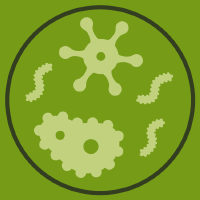Topic Menu
► Topic MenuEnvironmental Bioengineering and Geomicrobiology
Topic Information
Dear Colleagues,
Environmental microorganisms play key roles in driving the biogeochemical cycles of different elements by catalyzing a large diversity of redox reactions and, thus, contribute greatly to maintaining environmental sustainability. They display highly diverse abilities to catalyze the synthesis, degradation, modification, mobilization, immobilization, oxidation, reduction, mineralization, and weathering of a vast number of different compounds. Therefore, environmental microorganisms have been widely used in bioengineering applications, such as bioremediation, bioleaching, water and groundwater treatment, biofuels, biosynthesis, metabolite production, biofertilizer, solid waste treatment, and wastewater treatment. This Special Issue on “Environmental Bioengineering and Geomicrobiology” will publish original research papers and comprehensive reviews about environmental microorganisms and their functions and applications in bioengineering. Topics for this Special Issue include, but are not limited to, the following: (a) Redox reactions catalyzed by environmental microorganisms and their roles in biogeochemical cycles. (b) Interactions between microbes and minerals. (c) The biodegradation and transformation of environmental contaminants, including organic and inorganic contaminants, as well as heavy metals. (d) The functional and genetic diversity of environmental microorganisms, revealed via laboratory experiments and metagenomic, transcriptomic, and proteomic analyses. (e) The bioremediation of soils, sediments, surface water, and groundwater. (f) The microbial treatment of solid waste and wastewater. (g) Biofertilizer and interactions between microbes and plants. (h) Extremophilic microorganisms: diversity and functions. (i) Microbial synthesis. (j) Engineered microorganisms.
Prof. Dr. Xian-Chun Zeng
Prof. Dr. Deng Liu
Topic Editors
Keywords
- geomicrobiology
- environmental microbe
- redox reaction
- heavy metal and metalloid pollution
- microbial remediation
- microbial diversity
- bioreactor
- bioengineering of environmental microbe,
- biofilm
- metagenomics
Participating Journals
| Journal Name | Impact Factor | CiteScore | Launched Year | First Decision (median) | APC | |
|---|---|---|---|---|---|---|

Applied Microbiology
|
- | - | 2021 | 13.3 Days | CHF 1000 | Submit |

Bioengineering
|
4.6 | 4.2 | 2014 | 17.7 Days | CHF 2700 | Submit |

Biology
|
4.2 | 4.0 | 2012 | 18.7 Days | CHF 2700 | Submit |

Environments
|
3.7 | 5.9 | 2014 | 23.7 Days | CHF 1800 | Submit |

Microorganisms
|
4.5 | 6.4 | 2013 | 15.1 Days | CHF 2700 | Submit |

MDPI Topics is cooperating with Preprints.org and has built a direct connection between MDPI journals and Preprints.org. Authors are encouraged to enjoy the benefits by posting a preprint at Preprints.org prior to publication:
- Immediately share your ideas ahead of publication and establish your research priority;
- Protect your idea from being stolen with this time-stamped preprint article;
- Enhance the exposure and impact of your research;
- Receive feedback from your peers in advance;
- Have it indexed in Web of Science (Preprint Citation Index), Google Scholar, Crossref, SHARE, PrePubMed, Scilit and Europe PMC.



